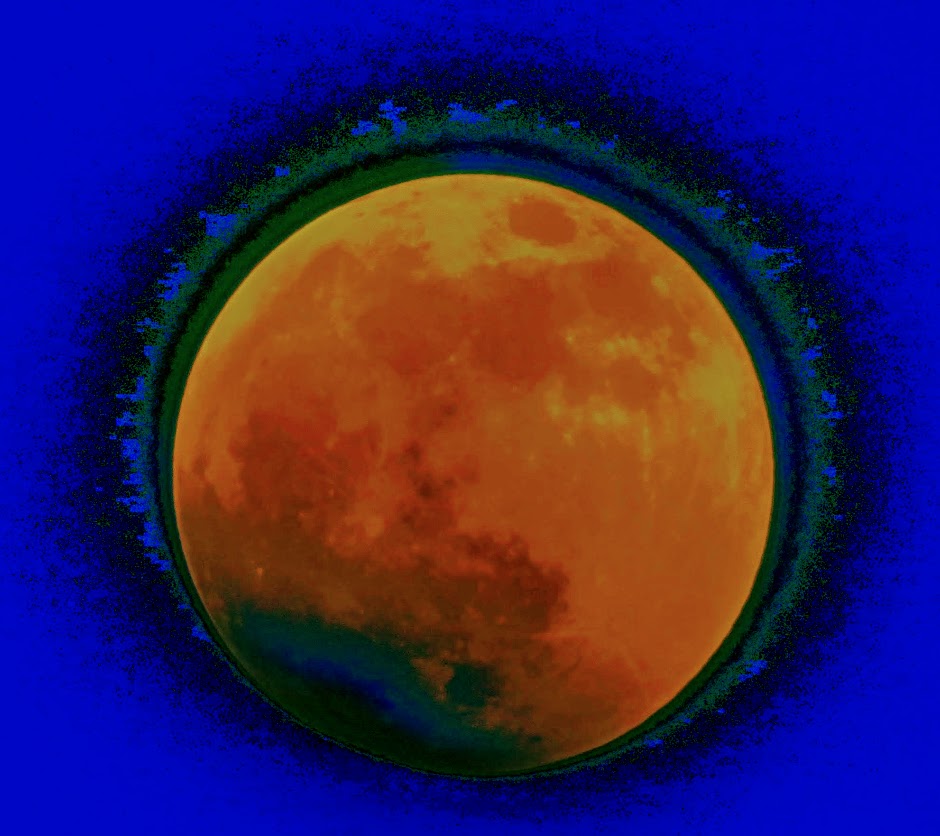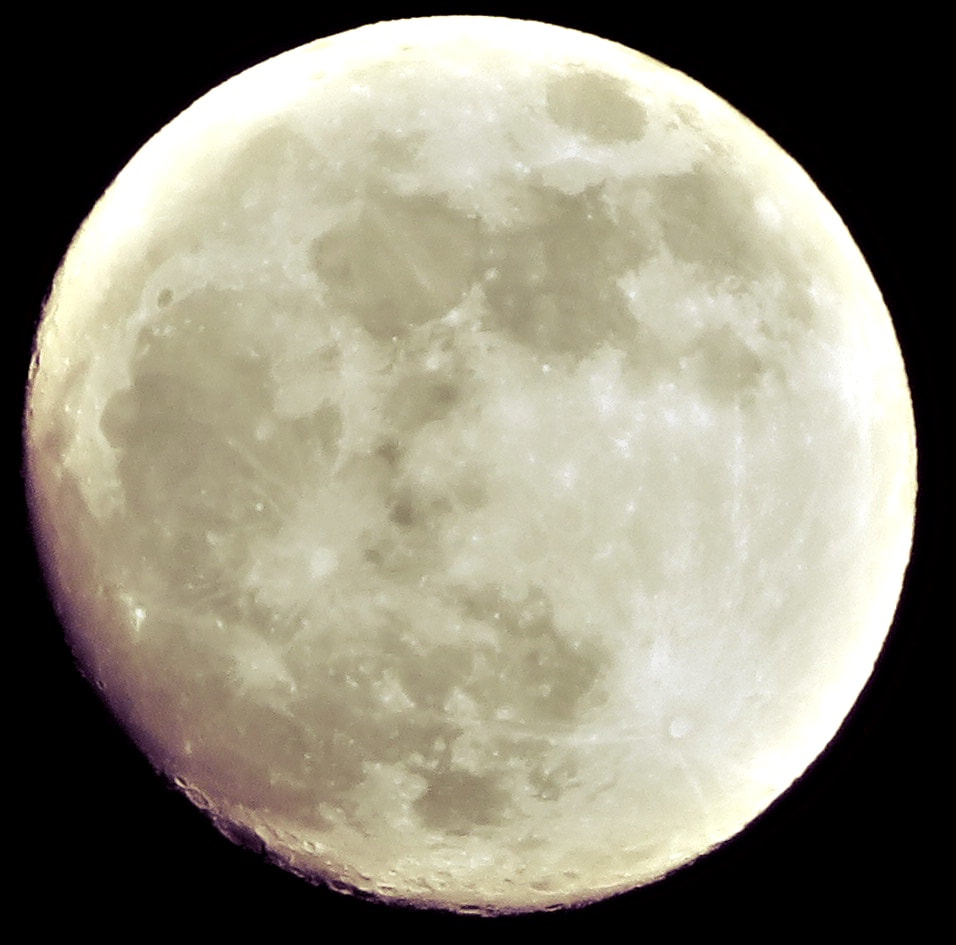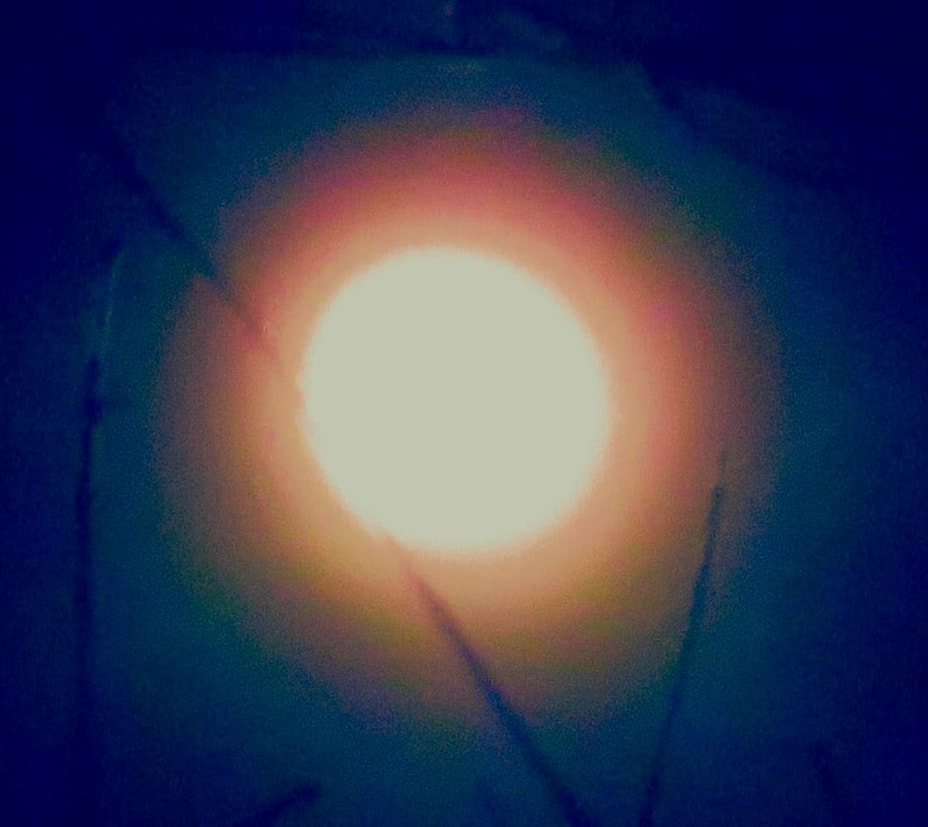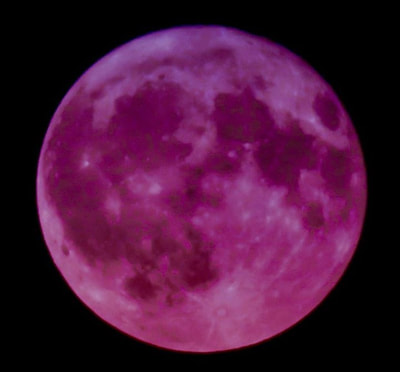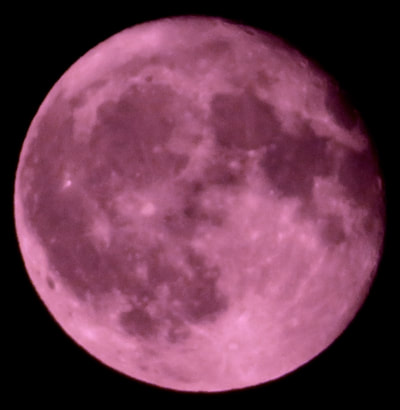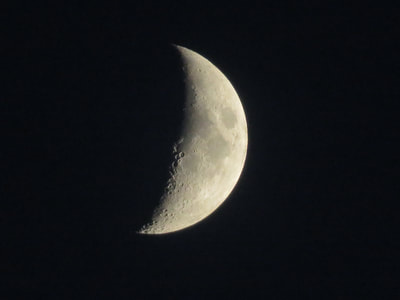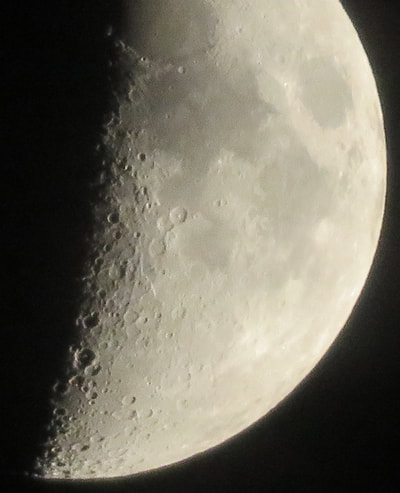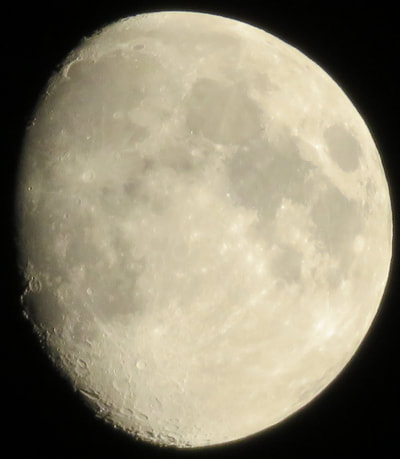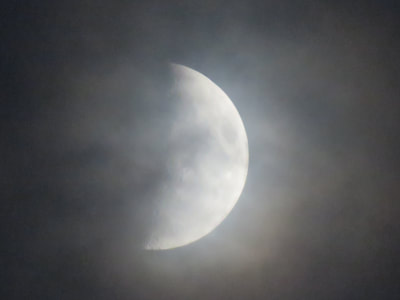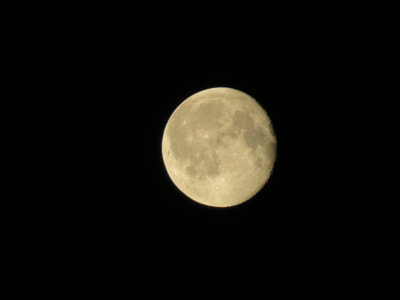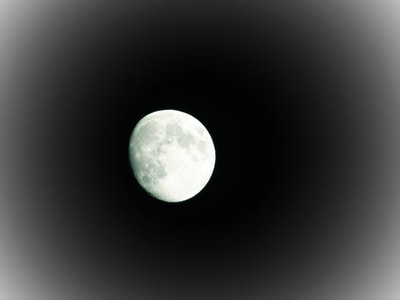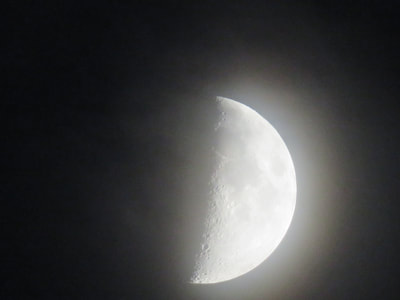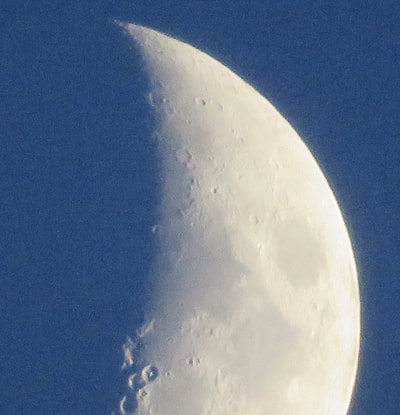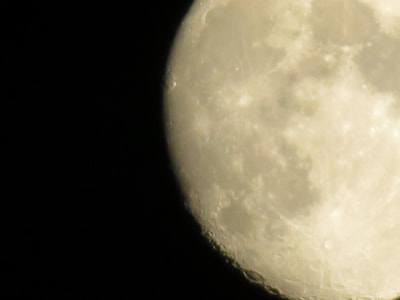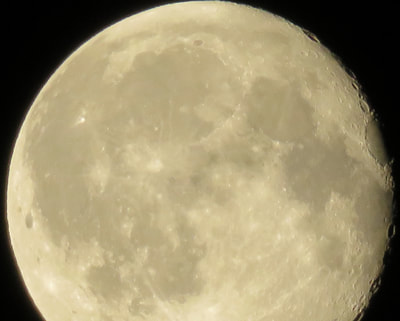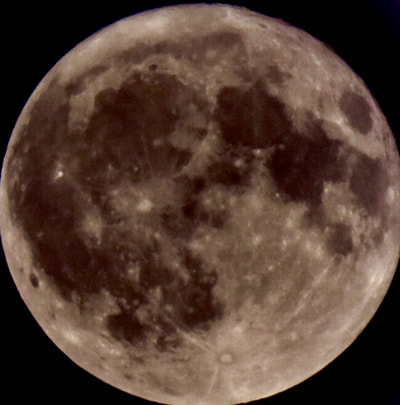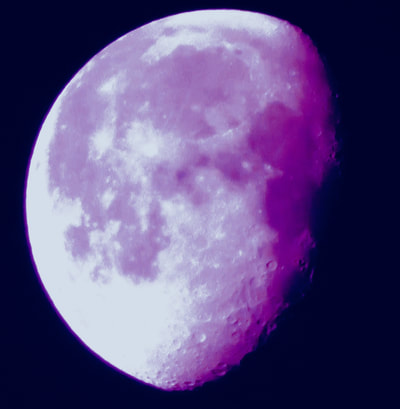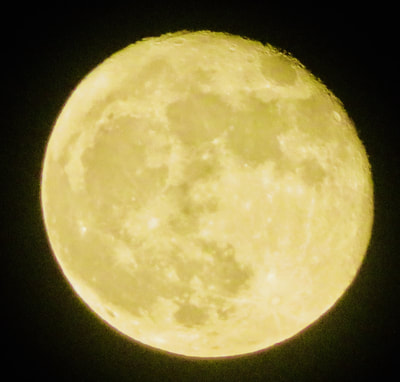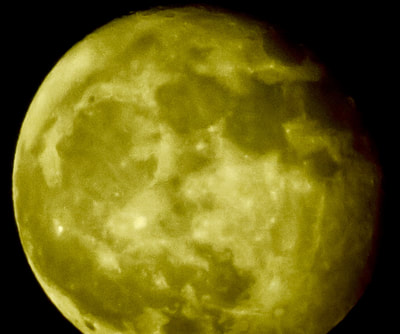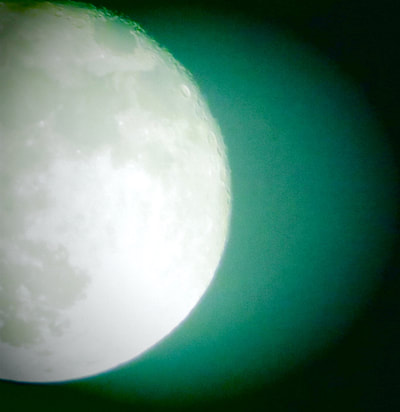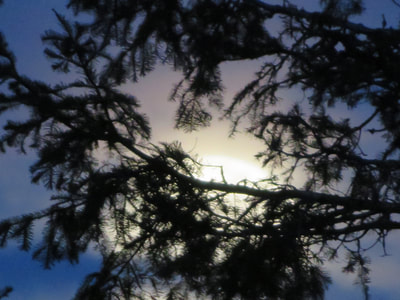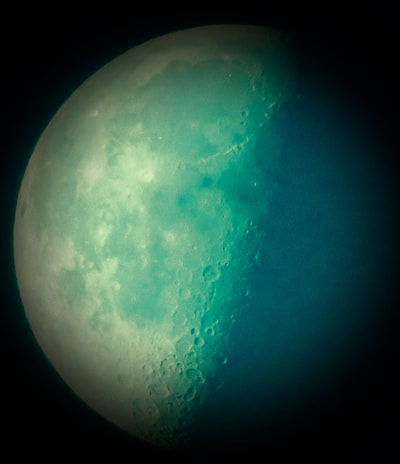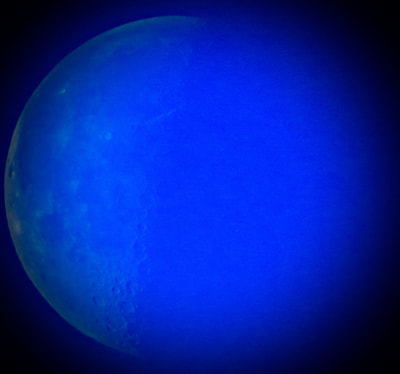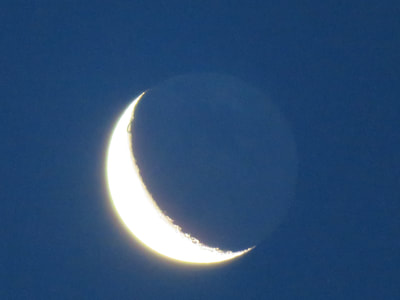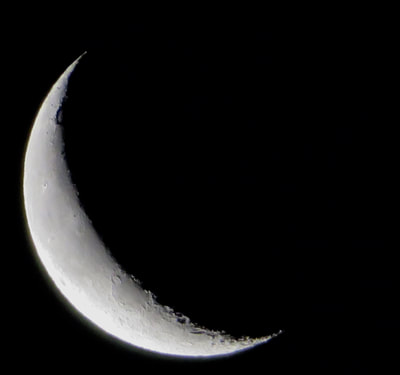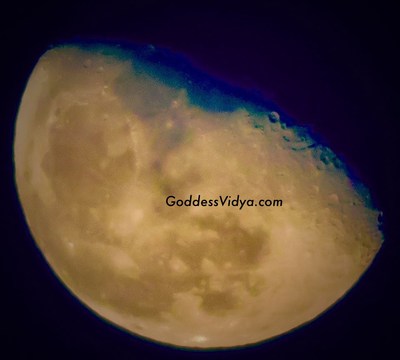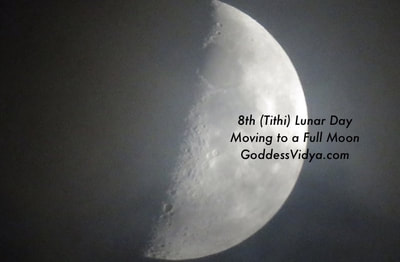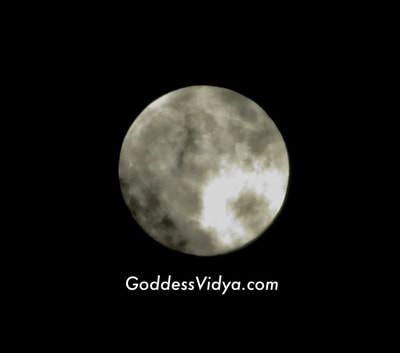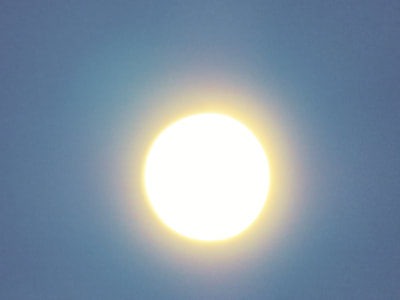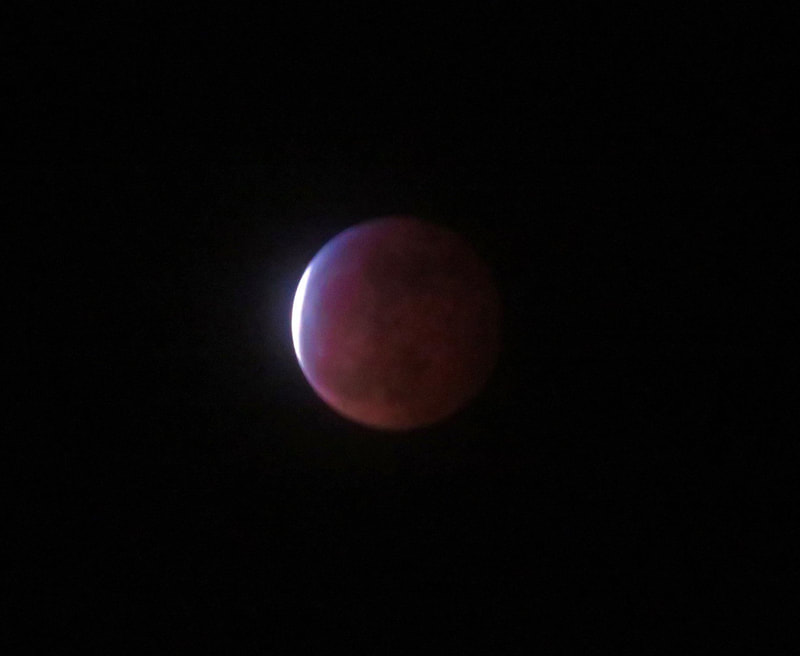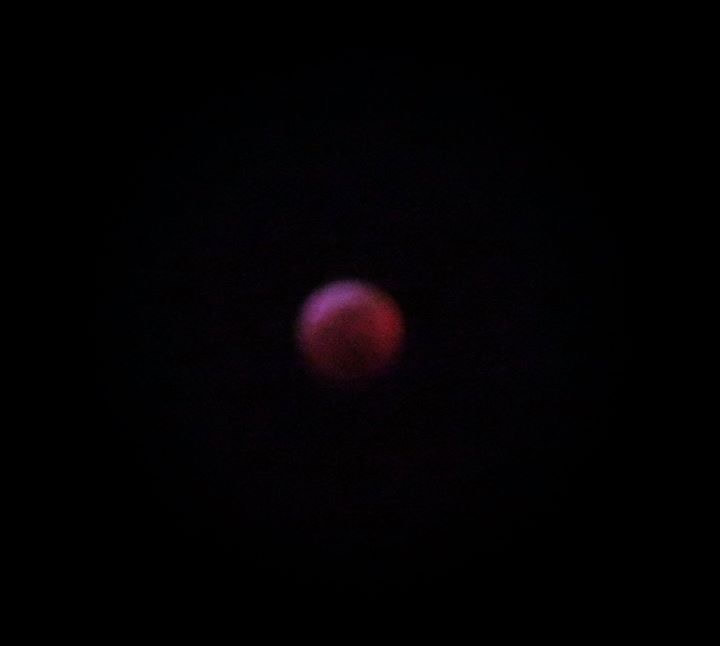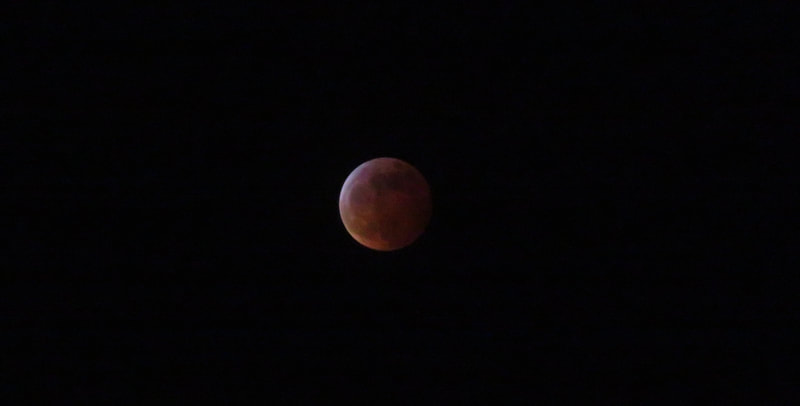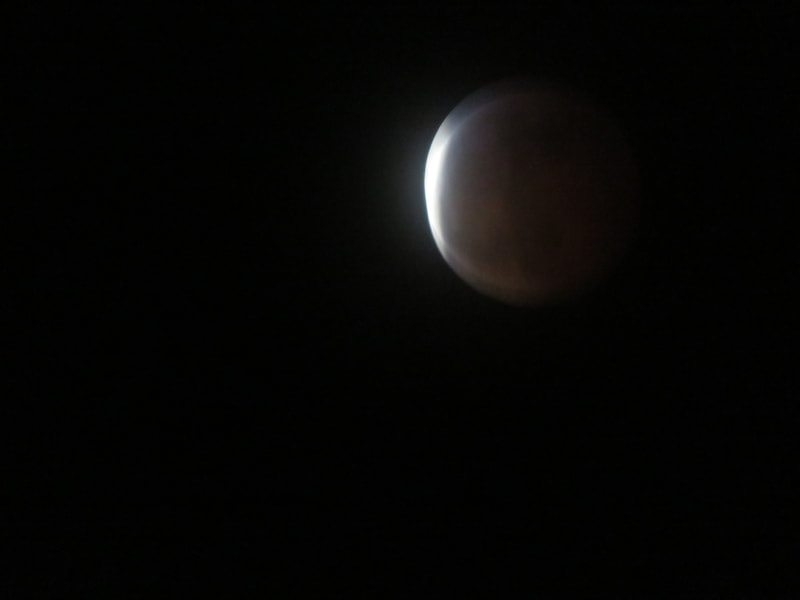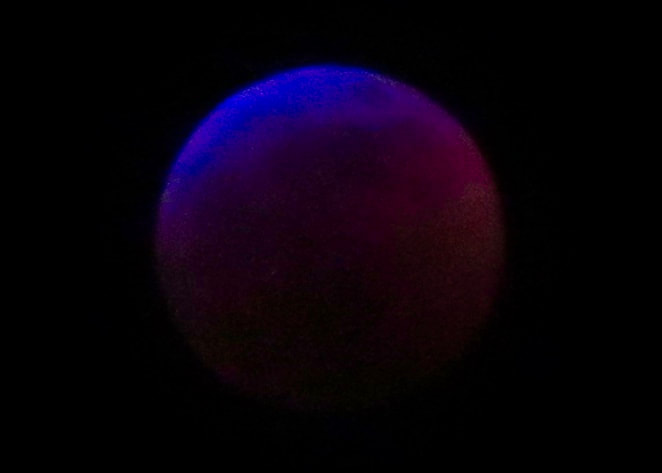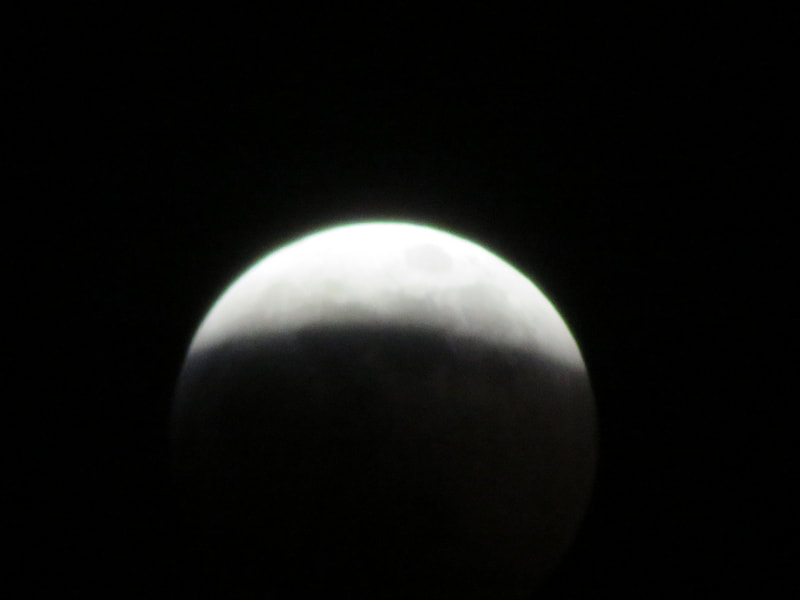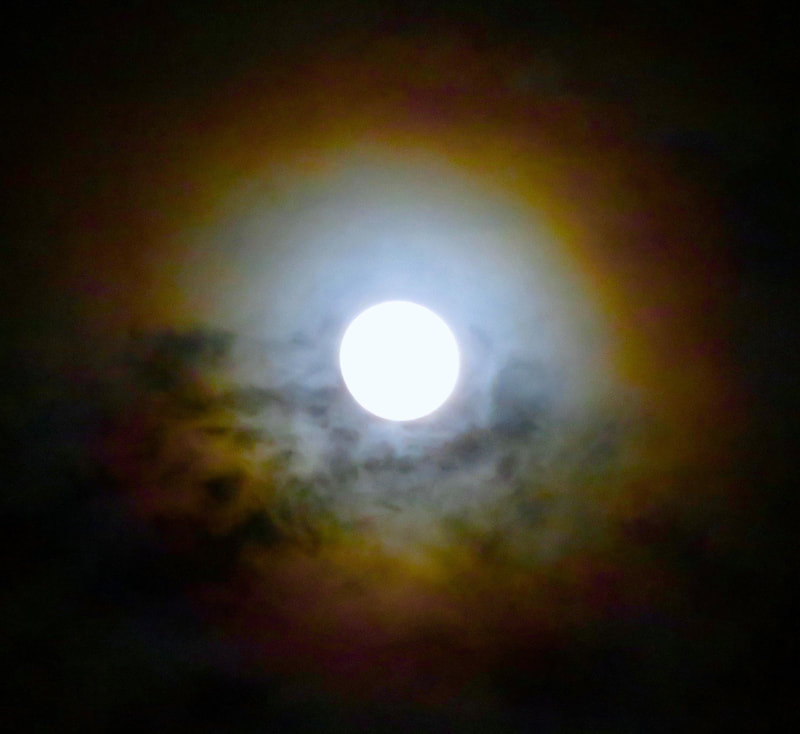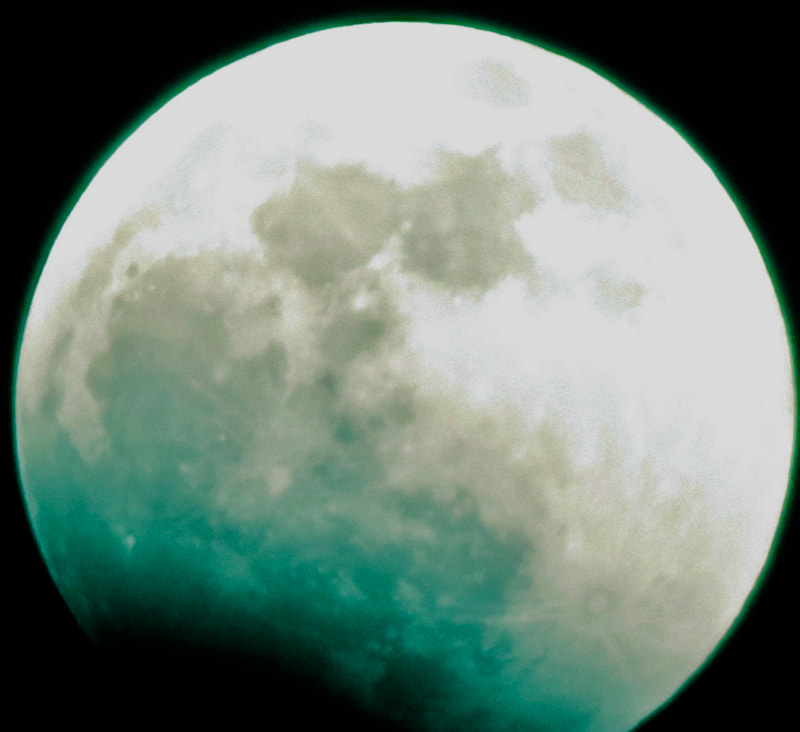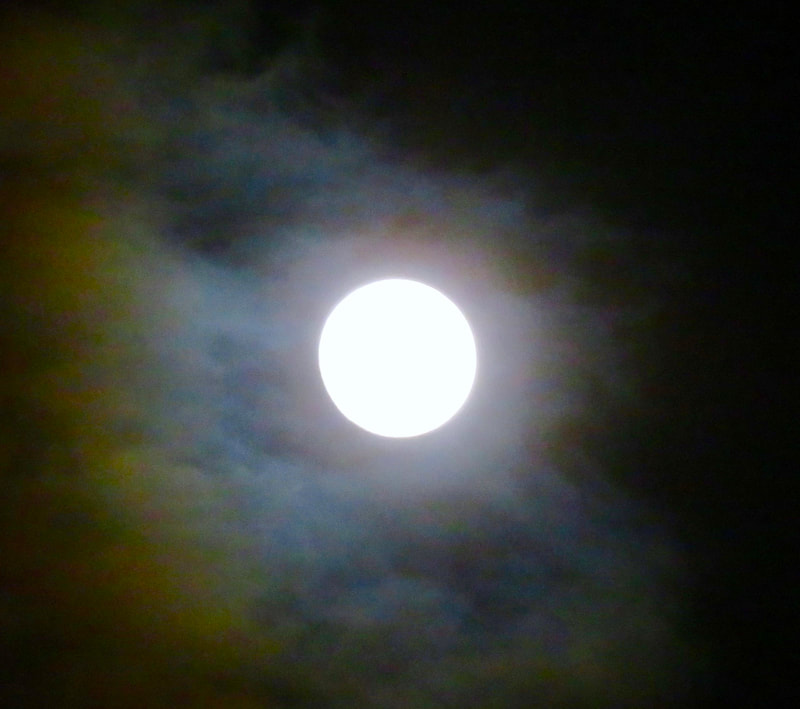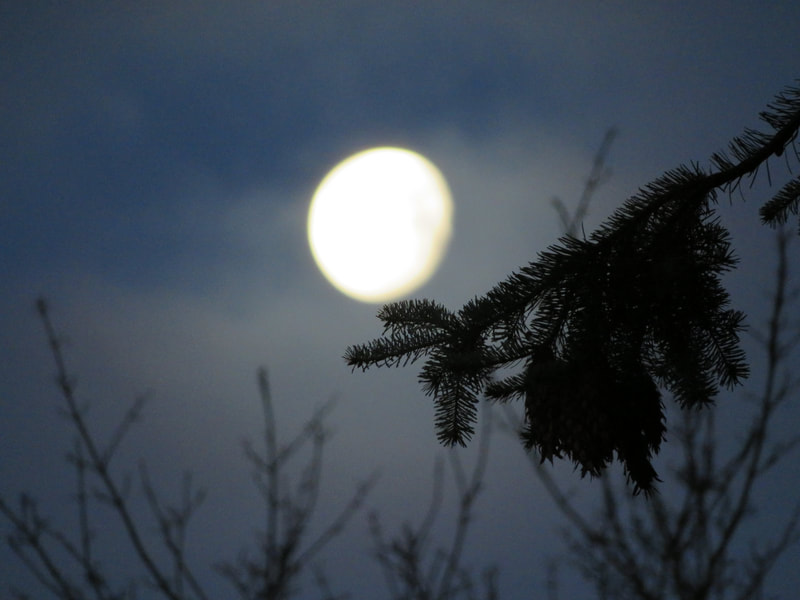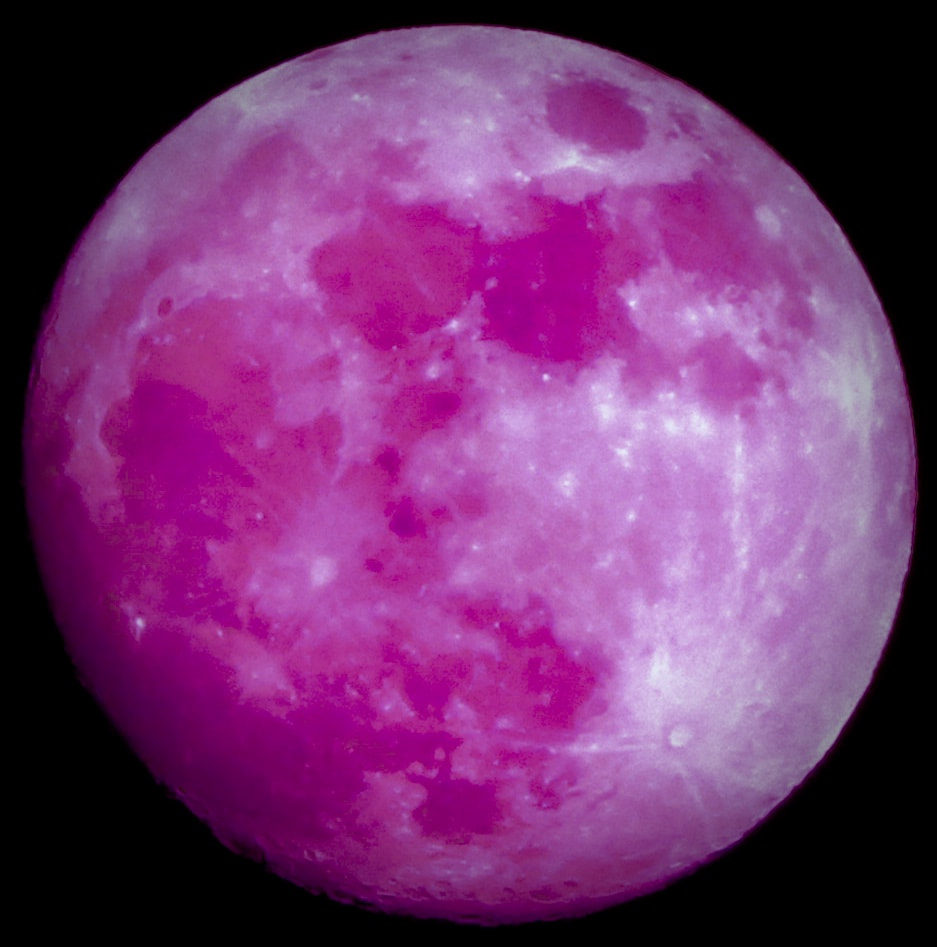SOMA aka Moon Synopsis!
Two oft-mentioned Vedic drinks are Amrita and Soma.
Amrita is for the immortal body and Soma is for the immortal soul.
Soma was a ritual drink of importance both in the Vedic and greater Persian culture when it was part of Bharatam.
The Vedic gods Indra and Agni are said to have consumed Soma in rather large quantities.
In the scriptures, Lord Soma and the plant are interchangeably used to cause ambiguity.
In the Vedic ritual, Agni stoma or Somoyaga, Soma is to be presented as the main offerings to the presiding deity.
This makes it difficult to comprehend the deity:
first as a plant;
secondly as inspiration to those seeking and finally as the Moon God.
Hindus do not differentiate between the divergent aspects – they were the same Lord Soma.
MOON GOD:
Soma is also the Moon God.
The Moon was thought to be the storehouse of the elixir.
A waxing moon was also symbolic in that, Soma was recreating himself, ready to be drunk again. Thus Soma represents and animates the juice of the soma plant. In the Vedic hymns, praise of the Moon God and soma, the actual juice are not distinct.
According to Vedic and Puranic accounts, all the gods drank Soma.
The earliest list of the Seven Rishis is given by Jaiminiya Brahmana 2.218-221:
Agastya,
Atri,
Bhardwaja,
Gautam,
Jamadagni,
Vashistha and
Vishvamitra
Brihadaranyaka Upanisad 2.2.6 with a slightly different list:
Gautama
Bharadvaja,
Shandilya
Jamadagni,
Vashistha
Kashyapa
Atri, Bhrigu.
The late Gopatha Brahmana 1.2.8 has
Vashistha,
Vishvamitra,
Jamadagni,
Gautama,
Bharadvaja,
Gungu,
Agastya,
Bhrigu
Kashyapa.
Atri was married to the virtuous Anusuya.
Brahma, Vishnu and Siva wanted to test her virtues and appeared before her, asking that she serve them food provided she appears naked. The Trinity is transformed into infants and she began feeding them.
Narada brings this news to the Devis.
They come running to plead that the infants be reverted to their divine Trinity forms. Upon reversion, the Trinity and the Devis were pleased with Anusuya’s virtuousness and offered a boon.
The childless couple asked for a son who will be remembered forever by mother earth and one who will prove useful to all forms of life.
The boon gave the couple, Soma or Chandra, Durvasa and Dattatreya were born. Durvasa mastered the Vedas, did penance and became a great sage.
Dattatreya became a Deva and equaled the status of Indra, Vayu, Varuna, Kubera and Yama.
Thus he became a part of Devalokha.
Soma obtained the status of Navagraha and thus came into being the origin of the Lunar Dynasty.
Soma performed severe penance and received several boons from the Trinity.
Among the boons, one was to permeate and influence the human mind and fermentation, influence the human psyche and subconscious, be a giver of life force, influence the growth and yield of medicinal herbs, influence the happy and sad part of all life forms and provide moonlight at night.
The blessings of Lord Vishnu conferred the title to Soma as Lord Chandra.
Chandra is said to have 27 wives, the daughters of Daksha, the son of Lord Brahma.
Symbolically these are the 27 lunar Nakshatras or stars.
At the time of marriage, Daksha asked for a promises that Chandra would not look down upon any of the wives.
However, Rohini becomes his favourite wife. Due to this partiality, the rest of the wives returned to their father.
Soma asks for the return of the 26 wives. The father in law stipulates a condition of impartiality.
This promise was apparently breached.
VISHNU PURANA:
This Purana gives a different version. But one can say it is an addition to the story.
Lord Soma gets appointed as monarch of the stars and plants; sacrifices and of penance. At the time of writing of this Purana, intoxicants were strictly forbidden.
So here Soma as the god of soma juice was no longer praised.
According to this Purana, Soma was the son of Atri, therefore the grandson of Brahma.
He performs a Rajasuya Yagna or Fire-sacrifice.
He went to Devalokha to invite the Gods and Devas. He also requested Vrihaspati, the Deva Guru to preside as the main priest. Indeed it was Vrihaspati who taught Chandra and Vedas and the divine skills.
However Vrihaspati could not go and asked his wife Tara to preside over the yagna.
During the yagna, Soma begins to attain more beauty. He acquires the glory of the yagna and becomes arrogant.
His divine beauty kept increasing and the ladies could not keep their eyes away from him.
Asparas, the devalokha angels, the other Devalokha women and his own guru, Vrihaspati’s wife, Tara, began to fall for Soma.
Indeed some of the husbands became jealous and left the yagna.
Some of the Deva women stayed back to have physical relationship but later left for devalokha.
Tara was the last to leave as she truly fell in love with Soma.
Her love was not lust.
He too admired Tara’s beauty and in his assumed licentiousness, he sweeps her away and engages full-time house-hold.
Vrihaspati was the preceptor of the Gods.
He tries to regain his wife.
Soma informs Vrihaspati that Tara is staying with him on her own volition and willfulness. In modern terms we say 'consent by adults.'
She can leave anytime she pleases, said Soma.
The matter is brought to Lord Shiva, threatening a war. His anger affects the panchabhootas.
There is suffering to come in all three worlds.
Indra and other Gods support Vrihaspati.
Soma makes an alliance with the demons.
He is supported by the sage Usanas. Lord Indra seeks Brahma’s assistance to stop the war.
Tara too appeals to Brahma for protection.
Lord Brahma curses Soma to be a sinner and commands him to return Tara.
Soma stops the war to have the curse reversed.
Now, there is a twist.
Tara is pregnant.
Problemo! Vrihaspati would only receive her after the child is born.
Brahma has it that the child is born on the spot!
Surprise, surprise, it is a damn pretty child, so both Vrihaspathi and Soma claim paternity.
Tara was too shy to reveal the real father.
Now, the child becomes indignant.
‘Unless, one of you declare to be my father, I will sentence you to such a fate as shall deter every female from hesitating to speak the truth’.
That is pretty ghastly so Brahma interferes to trouble shoot.
He appeals to Tara to speak the truth as to who was fiddling with her to the point of conception. ‘
Vrihaspati or Soma?’ asked Brahma. She looked up and said blushingly ‘Soma!’ Soma runs to the child and embraced his son ‘well done my boy, verily thou art wise’ he said. The boy is named Budha.
He becomes the regent of the planet Mercury.
This Budha is not to be confused with the Buddha of Buddhism.
One ‘d’ is missing, if you notice well!
The child is brought to his wives.
Only Krittika and Rohini care for the baby.
Rohini gives special attention to Budha and Soma reciprocates his love in a differing manner, preferring Rohini.
The rest feel neglected as Soma has breached a promise to be impartial to Daksha’s daughters.
Daksha’s curses that Soma be depleted of his beauty.
By the time Soma approaches Lord Siva for help to remove the curse, he had already lost 14 days beauty and was left only one day to completely look miserable.
He completely surrenders himself to Lord Siva.
At this stage, Lakshmi, also born of the ocean milk and part of the other divine drink, the Amrit, approaches Parvathi to enlist Siva’s support.
Lord Siva agreed to honour Soma.
Vrihaspati declared that Shiva was dishonouring the company of gods.
Later Brahma declared in favour of Vrihaspati.
Lord Siva feels pious and kind upon hearing Soma’s plea and takes and keeps him on his matted hair.
There he remained forever, with the last part of his beauty and Daksha’s curse could not affect him further except that Soma’s shine would increase for 15 days and deteriorate each day according to Daksha’s curse.
Thus the Moon God shines in resplendent glory on the 15th day as Pournima and loses radiance to be a no-moon day as Amavasya. Either way, Anusuya’s boon remains that Soma would be remembered forever.
SOMAVARA VRATA:
In Hindu thoughts all days are given a Vedic name. Monday is referred to as Somavaram.
There are special Mondays such as Shravana Somavara and Karthikai Somavara.
According to Skanda Purana, vrat is observed on the Mondays of Karthikai month.
On these days, one meditates on the Supreme Siva.
Couples worship Parvathi-Parameshwara.
Saluting these couples, they observe vratam. They visit temples to pray to Uma-Mahesrwara.
There they annoit the Lord with panchamirtham and other pleasant offerings such as bilva leaves.
This vrat is said to be a way towards Kailasham.
The moon apparently observed this vrat to get its ‘moonness’.
Thereafter the moon saluted Lord Gauri-Shankara and requested that this vratam be called Somavara Vratam.
DEPICTION:
In Hinduism, the Soma drink, also referred to as Chandra or the Moon God, was depicted as a bull or bird, and sometimes even as an embryo, but rarely as an adult human.
Modern art sometimes depict the drink as mushroom!
This deity evolved into a lunar deity.
Hence, the full moon is considered the right time to collect the divine drink.
The moon is also the cup from which the gods drink Soma.
This identifies Soma even more with the Moon God, Chandra.
Lord Soma rides through the sky in a chariot drawn by ten white horses or antelopes.
As he travels the atmosphere, he is represented as a copper-colored man, trailing a red pennant or nautical flag behind his three wheeled chariot.
He has in his hands, a cup and a lotus.
It is to be noted that Soma, the elixir of immortality is for God’s and Deva’s consumption and not subscribed for ordinary mortals. Soma, the god in the juice is said to clothe the naked and heal the sick.
He is addressed as the god in the highest strains of adulation and veneration.
He was described to be divine and immortal and also confer immortality on gods and men.
In later periods, the name of Soma was still attached to the Moon.
There are writings to state that Soma seems to be used in both senses: as god of the intoxicating juice and as the moon ruling in the night. Soma is the moon and food of the gods; the Sun has the nature of Agni and the moon of Soma.
SOMA:
Rig Veda refers to Soma as God for Gods to give preference over Indra the God of Gods: RV 9.42.
The soma plant of the Rig Veda, is said to be asclepias acida.
It is a creeping plant, almost destitute of leaves.
It has a small white fragrant flower collected round the extremities of the branches.
The plant is said to yield purer milky juice than any other plant and is mild and acidic in nature.
Soma drink is identified with extraction of juice from the stalk of the soma plant.
It is personified as a divinity.
The exact identity of the plant is not known. In modern terms it is said to be species of Ephedra or variously hypothised to be a psychedelic mushroom, cannabis or peganum harmala.
These plants are said to form a mythological unity something similar to the Greek ambrosia.
The composition of Soma has given rise to many interpretations.
It is said to lead to divine exhilaration, perhaps with added hallucinogenic substance such as hemp.
The composition varies according to the type and place of ritual.
This beverage is not to be confused with ad-hoc substitutes prepared by priests, even in other faiths.
Here and there one reads of juice from the roots of plants such as ‘nyagradha’ which grows on hills.
The secret of the genuine Soma drunk by Gods and Devas remains in the Vedas and Puranas.
It was an initiate of the descendants of the maharishis, the real Agnihotris or the initiates of great Hindu mysteries.
That soma drink made a new personality of the initiate; he is reborn and transformed and his spiritual nature overcame his physical giving him divine power.
It is a plant and at the same time a god. It forcibly connects the inner, highest spirit of man, which spirit is like the mystical Soma as he soars above his physical nature and ineffable glory of Bliss.
Soma juice, is not man or priest to be supplied commercially in little bottles.
And is most certainly not something obtained from the local pharmacy!
RIG VEDA:
Soma finds frequent mention in the Rigveda. Interestingly, the Ninth Mandala of the Rigveda, which consists of hyms addressed to Soma Pavamma, is known as the Soma Mandala.
In some of the hymns he is extolled as the Creator or Gather of the Gods.
At that time he must have been a popular deity.
Then Indra was also a worshipper of Soma.
Indra gets hold of the plant brought to him from a mountain.
In some places it is said that the drink Soma was kept by King Soma who dwelt with the Gandharvas.
They were a race of demi-gods or minor deities who formed the royal choir in Indra’s court.
The celestial gods learnt of the soma juice, wished to obtain it.
They did not know how to get possession.
Vac, the goddess of speech enters to scene to advise of the Ghandarvas’ weakness for women and volunteered the assignment. The gods are hesitant to let Vac go. I will obtain King Soma and be wherever you want me to, she said.
In another version, Soma is in the sky while the gods are living on earth.
Wishing to possess Soma, they sent Brahma’s daughter, Gayatri, to fetch it. She goes in the form of a bird.
While she was returning with soma, the Ghandarvas seized it and gave it to Goddess Vac.
When soma was handed to the gods a dispute arose as to who was to get ‘hit’ first.
A race was organized for the winner to taste the soma first.
Apparently Vayu reached the goal and Indra being second. Indra tried to a ‘compromise’ so Vayu could have two thirds of the drink. This was not agreeable so but finally Indra got to drink a quarter peck!
JYOTIRLINGA:
They are the most important of the Lingas and twelve in number.
The names are Somnatha, Mallikarjuna, Mahakala, Omkara, Kedara, Bhimshankara. Vishvanatha, Tryambaka, Vaidynatha, Nagesha, Rameswara and Ghushnesha.
Somnatha is the name of Shiva in the town of the same name situated in Prabhas Patan in Saurashtra in the state if Gujarat in India.
It is connected with the story of Daksha’s curse to Chandra or Soma who is the moon god in Hindu mythology.
Daksha was one of the patriarchs and Soma was his son-in-law.
The story of Daksha’s curse and the waning of the moon are hereinbefore told.
SYMBOLISM:
The human heart is like a sky.
Thoughts are moving in and out.
They will also cover the Sun symbolising the intellect.
Chandrama manaso hjahata – the moon was born out of the mind.
The mind is a bundle of thoughts.
The moon reflects the mind’s nature.
Our own thoughts of desire form the dark clouds.
When there is too much dark clouds both the sun and the moon are hidden.
Clouds also symbolise sankalpas – resolutions and vikalpas – indecisivenss.
The mind and intellect shine brightly when thoughts are controlled.
There is close affinity between the mind and waxing moon; both are subject to decline and progress.
The waning moon symbolises the waning of the mind. So the mind has to be controlled, reduced and finally destroyed.
Sadhana is directed towards the killing of Manohara, the mind and Maya, the veil of delusion.
Chathurdasi, the fourteenth night, is the weebit of the moon left.
The sadhaka has to make an effort on that day.
The dark half of Chaturdasi is called Sivarathri.
This hour is to be spent on japa and syana od Siva, preferably observing vratam.
Mahashivarathri comes onece a year.
Shavan,corpse becomes Shivam, God by the removal of the clouds in Manas.
KUNDALINI:
The word Soma’s true identity is the Moon.
This lustrous crescent Moon is depicted on Siva’s forehead to represent the blissful radiance flooding the brain when Kundalini is aroused and sends the powerful stream of prana up the spine.
Kundalini is also known as Serpent Power.
Mythologically, the serpent represents a being of great power and wisdom.
The most overt system designed to awaken Kundalini is the Tantras.
One of such Tantric practices involves sexual arousal and the development of the ability to convert sexual essence and send them to the brain rather than expressing sexual energy outwardly.
These rituals are diverse and linked to meditation and rituals.
Copulation and bliss is referred to in obscure and symbolic terms.
Tantra as a spiritual science is best understood by a guru’s instructions.
Hari Om
Yogi Ananda Saraswathi
Two oft-mentioned Vedic drinks are Amrita and Soma.
Amrita is for the immortal body and Soma is for the immortal soul.
Soma was a ritual drink of importance both in the Vedic and greater Persian culture when it was part of Bharatam.
The Vedic gods Indra and Agni are said to have consumed Soma in rather large quantities.
In the scriptures, Lord Soma and the plant are interchangeably used to cause ambiguity.
In the Vedic ritual, Agni stoma or Somoyaga, Soma is to be presented as the main offerings to the presiding deity.
This makes it difficult to comprehend the deity:
first as a plant;
secondly as inspiration to those seeking and finally as the Moon God.
Hindus do not differentiate between the divergent aspects – they were the same Lord Soma.
MOON GOD:
Soma is also the Moon God.
The Moon was thought to be the storehouse of the elixir.
A waxing moon was also symbolic in that, Soma was recreating himself, ready to be drunk again. Thus Soma represents and animates the juice of the soma plant. In the Vedic hymns, praise of the Moon God and soma, the actual juice are not distinct.
According to Vedic and Puranic accounts, all the gods drank Soma.
The earliest list of the Seven Rishis is given by Jaiminiya Brahmana 2.218-221:
Agastya,
Atri,
Bhardwaja,
Gautam,
Jamadagni,
Vashistha and
Vishvamitra
Brihadaranyaka Upanisad 2.2.6 with a slightly different list:
Gautama
Bharadvaja,
Shandilya
Jamadagni,
Vashistha
Kashyapa
Atri, Bhrigu.
The late Gopatha Brahmana 1.2.8 has
Vashistha,
Vishvamitra,
Jamadagni,
Gautama,
Bharadvaja,
Gungu,
Agastya,
Bhrigu
Kashyapa.
Atri was married to the virtuous Anusuya.
Brahma, Vishnu and Siva wanted to test her virtues and appeared before her, asking that she serve them food provided she appears naked. The Trinity is transformed into infants and she began feeding them.
Narada brings this news to the Devis.
They come running to plead that the infants be reverted to their divine Trinity forms. Upon reversion, the Trinity and the Devis were pleased with Anusuya’s virtuousness and offered a boon.
The childless couple asked for a son who will be remembered forever by mother earth and one who will prove useful to all forms of life.
The boon gave the couple, Soma or Chandra, Durvasa and Dattatreya were born. Durvasa mastered the Vedas, did penance and became a great sage.
Dattatreya became a Deva and equaled the status of Indra, Vayu, Varuna, Kubera and Yama.
Thus he became a part of Devalokha.
Soma obtained the status of Navagraha and thus came into being the origin of the Lunar Dynasty.
Soma performed severe penance and received several boons from the Trinity.
Among the boons, one was to permeate and influence the human mind and fermentation, influence the human psyche and subconscious, be a giver of life force, influence the growth and yield of medicinal herbs, influence the happy and sad part of all life forms and provide moonlight at night.
The blessings of Lord Vishnu conferred the title to Soma as Lord Chandra.
Chandra is said to have 27 wives, the daughters of Daksha, the son of Lord Brahma.
Symbolically these are the 27 lunar Nakshatras or stars.
At the time of marriage, Daksha asked for a promises that Chandra would not look down upon any of the wives.
However, Rohini becomes his favourite wife. Due to this partiality, the rest of the wives returned to their father.
Soma asks for the return of the 26 wives. The father in law stipulates a condition of impartiality.
This promise was apparently breached.
VISHNU PURANA:
This Purana gives a different version. But one can say it is an addition to the story.
Lord Soma gets appointed as monarch of the stars and plants; sacrifices and of penance. At the time of writing of this Purana, intoxicants were strictly forbidden.
So here Soma as the god of soma juice was no longer praised.
According to this Purana, Soma was the son of Atri, therefore the grandson of Brahma.
He performs a Rajasuya Yagna or Fire-sacrifice.
He went to Devalokha to invite the Gods and Devas. He also requested Vrihaspati, the Deva Guru to preside as the main priest. Indeed it was Vrihaspati who taught Chandra and Vedas and the divine skills.
However Vrihaspati could not go and asked his wife Tara to preside over the yagna.
During the yagna, Soma begins to attain more beauty. He acquires the glory of the yagna and becomes arrogant.
His divine beauty kept increasing and the ladies could not keep their eyes away from him.
Asparas, the devalokha angels, the other Devalokha women and his own guru, Vrihaspati’s wife, Tara, began to fall for Soma.
Indeed some of the husbands became jealous and left the yagna.
Some of the Deva women stayed back to have physical relationship but later left for devalokha.
Tara was the last to leave as she truly fell in love with Soma.
Her love was not lust.
He too admired Tara’s beauty and in his assumed licentiousness, he sweeps her away and engages full-time house-hold.
Vrihaspati was the preceptor of the Gods.
He tries to regain his wife.
Soma informs Vrihaspati that Tara is staying with him on her own volition and willfulness. In modern terms we say 'consent by adults.'
She can leave anytime she pleases, said Soma.
The matter is brought to Lord Shiva, threatening a war. His anger affects the panchabhootas.
There is suffering to come in all three worlds.
Indra and other Gods support Vrihaspati.
Soma makes an alliance with the demons.
He is supported by the sage Usanas. Lord Indra seeks Brahma’s assistance to stop the war.
Tara too appeals to Brahma for protection.
Lord Brahma curses Soma to be a sinner and commands him to return Tara.
Soma stops the war to have the curse reversed.
Now, there is a twist.
Tara is pregnant.
Problemo! Vrihaspati would only receive her after the child is born.
Brahma has it that the child is born on the spot!
Surprise, surprise, it is a damn pretty child, so both Vrihaspathi and Soma claim paternity.
Tara was too shy to reveal the real father.
Now, the child becomes indignant.
‘Unless, one of you declare to be my father, I will sentence you to such a fate as shall deter every female from hesitating to speak the truth’.
That is pretty ghastly so Brahma interferes to trouble shoot.
He appeals to Tara to speak the truth as to who was fiddling with her to the point of conception. ‘
Vrihaspati or Soma?’ asked Brahma. She looked up and said blushingly ‘Soma!’ Soma runs to the child and embraced his son ‘well done my boy, verily thou art wise’ he said. The boy is named Budha.
He becomes the regent of the planet Mercury.
This Budha is not to be confused with the Buddha of Buddhism.
One ‘d’ is missing, if you notice well!
The child is brought to his wives.
Only Krittika and Rohini care for the baby.
Rohini gives special attention to Budha and Soma reciprocates his love in a differing manner, preferring Rohini.
The rest feel neglected as Soma has breached a promise to be impartial to Daksha’s daughters.
Daksha’s curses that Soma be depleted of his beauty.
By the time Soma approaches Lord Siva for help to remove the curse, he had already lost 14 days beauty and was left only one day to completely look miserable.
He completely surrenders himself to Lord Siva.
At this stage, Lakshmi, also born of the ocean milk and part of the other divine drink, the Amrit, approaches Parvathi to enlist Siva’s support.
Lord Siva agreed to honour Soma.
Vrihaspati declared that Shiva was dishonouring the company of gods.
Later Brahma declared in favour of Vrihaspati.
Lord Siva feels pious and kind upon hearing Soma’s plea and takes and keeps him on his matted hair.
There he remained forever, with the last part of his beauty and Daksha’s curse could not affect him further except that Soma’s shine would increase for 15 days and deteriorate each day according to Daksha’s curse.
Thus the Moon God shines in resplendent glory on the 15th day as Pournima and loses radiance to be a no-moon day as Amavasya. Either way, Anusuya’s boon remains that Soma would be remembered forever.
SOMAVARA VRATA:
In Hindu thoughts all days are given a Vedic name. Monday is referred to as Somavaram.
There are special Mondays such as Shravana Somavara and Karthikai Somavara.
According to Skanda Purana, vrat is observed on the Mondays of Karthikai month.
On these days, one meditates on the Supreme Siva.
Couples worship Parvathi-Parameshwara.
Saluting these couples, they observe vratam. They visit temples to pray to Uma-Mahesrwara.
There they annoit the Lord with panchamirtham and other pleasant offerings such as bilva leaves.
This vrat is said to be a way towards Kailasham.
The moon apparently observed this vrat to get its ‘moonness’.
Thereafter the moon saluted Lord Gauri-Shankara and requested that this vratam be called Somavara Vratam.
DEPICTION:
In Hinduism, the Soma drink, also referred to as Chandra or the Moon God, was depicted as a bull or bird, and sometimes even as an embryo, but rarely as an adult human.
Modern art sometimes depict the drink as mushroom!
This deity evolved into a lunar deity.
Hence, the full moon is considered the right time to collect the divine drink.
The moon is also the cup from which the gods drink Soma.
This identifies Soma even more with the Moon God, Chandra.
Lord Soma rides through the sky in a chariot drawn by ten white horses or antelopes.
As he travels the atmosphere, he is represented as a copper-colored man, trailing a red pennant or nautical flag behind his three wheeled chariot.
He has in his hands, a cup and a lotus.
It is to be noted that Soma, the elixir of immortality is for God’s and Deva’s consumption and not subscribed for ordinary mortals. Soma, the god in the juice is said to clothe the naked and heal the sick.
He is addressed as the god in the highest strains of adulation and veneration.
He was described to be divine and immortal and also confer immortality on gods and men.
In later periods, the name of Soma was still attached to the Moon.
There are writings to state that Soma seems to be used in both senses: as god of the intoxicating juice and as the moon ruling in the night. Soma is the moon and food of the gods; the Sun has the nature of Agni and the moon of Soma.
SOMA:
Rig Veda refers to Soma as God for Gods to give preference over Indra the God of Gods: RV 9.42.
The soma plant of the Rig Veda, is said to be asclepias acida.
It is a creeping plant, almost destitute of leaves.
It has a small white fragrant flower collected round the extremities of the branches.
The plant is said to yield purer milky juice than any other plant and is mild and acidic in nature.
Soma drink is identified with extraction of juice from the stalk of the soma plant.
It is personified as a divinity.
The exact identity of the plant is not known. In modern terms it is said to be species of Ephedra or variously hypothised to be a psychedelic mushroom, cannabis or peganum harmala.
These plants are said to form a mythological unity something similar to the Greek ambrosia.
The composition of Soma has given rise to many interpretations.
It is said to lead to divine exhilaration, perhaps with added hallucinogenic substance such as hemp.
The composition varies according to the type and place of ritual.
This beverage is not to be confused with ad-hoc substitutes prepared by priests, even in other faiths.
Here and there one reads of juice from the roots of plants such as ‘nyagradha’ which grows on hills.
The secret of the genuine Soma drunk by Gods and Devas remains in the Vedas and Puranas.
It was an initiate of the descendants of the maharishis, the real Agnihotris or the initiates of great Hindu mysteries.
That soma drink made a new personality of the initiate; he is reborn and transformed and his spiritual nature overcame his physical giving him divine power.
It is a plant and at the same time a god. It forcibly connects the inner, highest spirit of man, which spirit is like the mystical Soma as he soars above his physical nature and ineffable glory of Bliss.
Soma juice, is not man or priest to be supplied commercially in little bottles.
And is most certainly not something obtained from the local pharmacy!
RIG VEDA:
Soma finds frequent mention in the Rigveda. Interestingly, the Ninth Mandala of the Rigveda, which consists of hyms addressed to Soma Pavamma, is known as the Soma Mandala.
In some of the hymns he is extolled as the Creator or Gather of the Gods.
At that time he must have been a popular deity.
Then Indra was also a worshipper of Soma.
Indra gets hold of the plant brought to him from a mountain.
In some places it is said that the drink Soma was kept by King Soma who dwelt with the Gandharvas.
They were a race of demi-gods or minor deities who formed the royal choir in Indra’s court.
The celestial gods learnt of the soma juice, wished to obtain it.
They did not know how to get possession.
Vac, the goddess of speech enters to scene to advise of the Ghandarvas’ weakness for women and volunteered the assignment. The gods are hesitant to let Vac go. I will obtain King Soma and be wherever you want me to, she said.
In another version, Soma is in the sky while the gods are living on earth.
Wishing to possess Soma, they sent Brahma’s daughter, Gayatri, to fetch it. She goes in the form of a bird.
While she was returning with soma, the Ghandarvas seized it and gave it to Goddess Vac.
When soma was handed to the gods a dispute arose as to who was to get ‘hit’ first.
A race was organized for the winner to taste the soma first.
Apparently Vayu reached the goal and Indra being second. Indra tried to a ‘compromise’ so Vayu could have two thirds of the drink. This was not agreeable so but finally Indra got to drink a quarter peck!
JYOTIRLINGA:
They are the most important of the Lingas and twelve in number.
The names are Somnatha, Mallikarjuna, Mahakala, Omkara, Kedara, Bhimshankara. Vishvanatha, Tryambaka, Vaidynatha, Nagesha, Rameswara and Ghushnesha.
Somnatha is the name of Shiva in the town of the same name situated in Prabhas Patan in Saurashtra in the state if Gujarat in India.
It is connected with the story of Daksha’s curse to Chandra or Soma who is the moon god in Hindu mythology.
Daksha was one of the patriarchs and Soma was his son-in-law.
The story of Daksha’s curse and the waning of the moon are hereinbefore told.
SYMBOLISM:
The human heart is like a sky.
Thoughts are moving in and out.
They will also cover the Sun symbolising the intellect.
Chandrama manaso hjahata – the moon was born out of the mind.
The mind is a bundle of thoughts.
The moon reflects the mind’s nature.
Our own thoughts of desire form the dark clouds.
When there is too much dark clouds both the sun and the moon are hidden.
Clouds also symbolise sankalpas – resolutions and vikalpas – indecisivenss.
The mind and intellect shine brightly when thoughts are controlled.
There is close affinity between the mind and waxing moon; both are subject to decline and progress.
The waning moon symbolises the waning of the mind. So the mind has to be controlled, reduced and finally destroyed.
Sadhana is directed towards the killing of Manohara, the mind and Maya, the veil of delusion.
Chathurdasi, the fourteenth night, is the weebit of the moon left.
The sadhaka has to make an effort on that day.
The dark half of Chaturdasi is called Sivarathri.
This hour is to be spent on japa and syana od Siva, preferably observing vratam.
Mahashivarathri comes onece a year.
Shavan,corpse becomes Shivam, God by the removal of the clouds in Manas.
KUNDALINI:
The word Soma’s true identity is the Moon.
This lustrous crescent Moon is depicted on Siva’s forehead to represent the blissful radiance flooding the brain when Kundalini is aroused and sends the powerful stream of prana up the spine.
Kundalini is also known as Serpent Power.
Mythologically, the serpent represents a being of great power and wisdom.
The most overt system designed to awaken Kundalini is the Tantras.
One of such Tantric practices involves sexual arousal and the development of the ability to convert sexual essence and send them to the brain rather than expressing sexual energy outwardly.
These rituals are diverse and linked to meditation and rituals.
Copulation and bliss is referred to in obscure and symbolic terms.
Tantra as a spiritual science is best understood by a guru’s instructions.
Hari Om
Yogi Ananda Saraswathi
CHANDRA IN THE NAVA (9) GRAHAS (planets):
Chandra is a lunar deity. Surya, Chandra, Angaraka, Budha, Guru, Sukra, Sani, Rahu and Ketu are nine important Navagraha deities representing the nine planets.
The English equivalents of the first seven being are the Sun, Moon, Mars, Mercury, Jupiter, Venus and Saturn.
The last two are unique to Hindu astrology and they are Rahu and Ketu explained by mythology.
These deities are commonly found in Hindu temples and it is part of temple worship. Often, bhaktas are given to have their navagraha deity inscribed on copper plates placed in the puja room. In Hindu belief, the grahas determine the course of one’s life. They are repellents of evil that may visit a person or family. They also bring blessings.
Chandra is also called Rajanipati,
The Lord of the Might or Kshuparaka, One who Illuminates the Night.
Chandra’s chief consorts are Rohini and Tara.
But he goes on to marry, 27 nakshatras, all being daughters of Daksha.
His vahana is a chariot pulled by an antelope or by ten white horses.
He is also called Nishadipati, Nisha meaning night and Adipathi means Lord.
His guna is Sattva and represents the Mind.
Chandra, despite being blessed with 29 wives, suffers a series of love affairs.
His first lover was Tara, then the wife of Brihaspati, the planet Jupiter.
Tara becomes pregnant and gives birth to Budha another navagraha deity.
Budha hates Chandra for causing his illegitimacy.
Brahma banishes Chandra for the illicit affair and child born out of wed-lock.
The blame is shifted to intoxicants.
He then takes Daksha’s daughters as wives on condition that there will not be favouritism.
Now, Chandra failed in this and gets cursed by Daksha that he would lose his luster.
This accounts for the moon’s waxing and waning.
GRAHAS:
In Hindu thoughts, Grahas are connected to one’s karmas.
They are the markers of influence that indicate karmic influence.
This impacts a person’s behaviour and well being of his family.
While one cannot run his or her life with intellect alone,
the grahas put him to notice of divinity’s role in enforcing the laws of karma.
Humans may not be causative elements of his current life.
So grahas can be said to be similar to traffic signs and signals.
PRASNA MARGA:
Grahas are not restricted to the nine navagrahas.
There are various other spiritual entities.
Other than the navagraha nine,
these entities are said to have been born out of the wrath of Lord Rudra and Siva.
These spirits or grahas are malefic in nature.
JYOTISHA:
There were no sophisticated observation stations during the ancient times.
But Indian seers, by analysis and profound insight compiled extensive information on astronomy and astrology.
This became the science of jyothisha.
They collected date from various sources on planetary movements and human affairs.
Therein they found remarkable coincidences and concurrences within repetitive cyclic patterns that made them predictable.
This knowledge was codified to form composite knowledge of astrology.
Jyotisha became part of Hindu way of life.
To any Indian, intellectual or otherwise, it was significant to their lives.
Nothing was commenced or continued without recourse to jyotisha.
Indeed it was given the status of Vedanga, a limb of the Vedas.
As such, Navagrahas occupied the minds of millions in India over the millenia.
They have been celebrated and worshipped in sloka and stotra, in sculpture and music.
Chandra is given an equal status to Surya in Jyotish.
In Jataka Paarijaata by Vaidyanatha, he states that Chandra is king amongst planets alongside Surya.
However the learned commentator of Brihat-Jataka says that Chandra is queen in the planetary cabinet.
The second proposition seems to hold water as Chandra and his brilliance on Purnima-full moonlight gives a pleasing and cooling feeling unlike Surya who causes sweat from his heat.
Chandra rules over the Karta-cancer sign while he is exalted in Vrishbha- Tauras rasi. His all is in Vrishika-scorpio rasi. Chandra is lord of three nakshatras or lunar mansions being Rohini, Hasta and Shravana.
CHANDRA AND SOMA:
Chandra is also known as Soma and identified with a group of lunar deities.
Hence, Monday, dedicated to Chandra, is called Somavara.
Soma was the milky fermented liquor produced from the soma plant.
It was an integral part of Vedic sacrifice.
It was drunk by priests as a token of appreciation.
Soma is also amrita, the product of churning of the milk ocean.
It was a matter of dispute between gods and demons.
Those who had the blessings of Soma where elevated even above Indra.
Thus Soma became an independent deity also and started absorbing other deities.
Chandra was the god of the Moon.
He was the source of fertility.
He was absorbed by Soma and there was a coincidence in that both were born from the churning of the ocean.
This account is given in Matsya, Vushnu and Vayu Purana.
It was then found fitting that although considered independent, he should also become another name, Soma.
But every night he rose anew from the ocean. Vedic myths compound the issue.
While establishing Surya to be the greatest of the Gods, he is said to have fathered Soma and Chandra.
In such myths, Surya is the original creator of amrita which he passed to Soma and Chandra.
The implication here is Surya being the original source for Soma.
SIVA PURANA:
Parvathi - Sati is excluded from Daksha’s yagna.
Lord Siva is variously insulted in the presence devas and the gods.
Brahma and Vishnu, the supremacy race contenders are there as special guests.
From strands of Siva’s hair spring Virabhadra and Bhadrakali and hundreds of demi-gods.
Daksha’s guests were all whacked out of shape.
It is said that Indra was trampled;
Saraswati’s nose was cut;
Mitra’s eyes were pulled out; Agni’s hands were cut off and finally,
Chandra had to go to the dentist – his lost his teeth.
Then Daksha admitted to Shiva’s supremacy.
Just then Vishnu seized Siva by the throat and forced him to desist and acknowldege him as master. The end line in the Shiva Purana was that the Mahavishnu was not spared.
He earned Rudra-Siva’s wrath, earns some physical abuse at the hands of Siva’s weapons and finally submits to Lord Siva.
VEDIC ASTROLOGY:
In the Purusha Sukta is a famous verse ‘ chandrama manso jata’ meaning ‘Moon was born from the mind of the cosmic man.
Writings link this to incidents of insanity and mental asylums show statistical support.
Moon is the presiding deity of the water element. The sphere of the Moon is the reservoir of rainwater and thus Moon is the ruler of plants and the vegetable kingdom.
It represents Feminine Principle that energy creates and preserves.
The color of moon is white.
It rules peace of mind, comfort and general well being.
The moon gives illumination, sense of purpose, intuitive nature, sensuality, taste, youth and love for literature.
It is said to show influence around twenty four years in man’s life.
It also makes us moody, emotional and sensitive.
The moon is auspicious for those born in the ascending Moon cycle and malefic for those who were born in the descending Moon cycle.
The gemstone related to Moon is pearl.
KIRTANAS OF DIKSHITAR:
Muthusamy Dikshitar's Navagraha Kritis deals with Vedic astrology, as well as fine music.
There is one kriti for each of the classical nine planets.
He emphasies the Indian view that name and form, colour and sound, are but manifestations of the Divine.
The following is a translation of a kriti dedicated to Chandra.
“Oh mind! Let us sing in praise of the Moon, the very heart of the pious.
Who is worshipped by Indra and other rulers of the worlds; the spouse of Tara; who has sixteen Kalas (phases); the creator of night, the brother of Indira, the producer of the Nectar; let us constantly sing his praise.
He who is the ornament of the Lord Siva's crest; possessed of cool rays; who has four arms and Cupid for his parasol; the creator of night; the very eyes of Venkatesa; born of the mind of Virat, known as Vidhu; friend of the water lily; with the face of Brahma and Guruguha; with the figure of a hare; who receives both the curses and blessings of Brhaspati; who has a white body shining like the rays of the autumn moon; who wears a wristlet, armlet, garland and a crown; who is hostile to the lotus; and who is the darling of Rohini.”
TANTRIC MANTRA FOR MOON:
Om shram shreem shrom saha chandra mase namah
Hara Hara Mahadeva
(draft Gods, Goddesses, Minor Deities and Sages)
Yogi Ananda Saraswathi
Chandra is a lunar deity. Surya, Chandra, Angaraka, Budha, Guru, Sukra, Sani, Rahu and Ketu are nine important Navagraha deities representing the nine planets.
The English equivalents of the first seven being are the Sun, Moon, Mars, Mercury, Jupiter, Venus and Saturn.
The last two are unique to Hindu astrology and they are Rahu and Ketu explained by mythology.
These deities are commonly found in Hindu temples and it is part of temple worship. Often, bhaktas are given to have their navagraha deity inscribed on copper plates placed in the puja room. In Hindu belief, the grahas determine the course of one’s life. They are repellents of evil that may visit a person or family. They also bring blessings.
Chandra is also called Rajanipati,
The Lord of the Might or Kshuparaka, One who Illuminates the Night.
Chandra’s chief consorts are Rohini and Tara.
But he goes on to marry, 27 nakshatras, all being daughters of Daksha.
His vahana is a chariot pulled by an antelope or by ten white horses.
He is also called Nishadipati, Nisha meaning night and Adipathi means Lord.
His guna is Sattva and represents the Mind.
Chandra, despite being blessed with 29 wives, suffers a series of love affairs.
His first lover was Tara, then the wife of Brihaspati, the planet Jupiter.
Tara becomes pregnant and gives birth to Budha another navagraha deity.
Budha hates Chandra for causing his illegitimacy.
Brahma banishes Chandra for the illicit affair and child born out of wed-lock.
The blame is shifted to intoxicants.
He then takes Daksha’s daughters as wives on condition that there will not be favouritism.
Now, Chandra failed in this and gets cursed by Daksha that he would lose his luster.
This accounts for the moon’s waxing and waning.
GRAHAS:
In Hindu thoughts, Grahas are connected to one’s karmas.
They are the markers of influence that indicate karmic influence.
This impacts a person’s behaviour and well being of his family.
While one cannot run his or her life with intellect alone,
the grahas put him to notice of divinity’s role in enforcing the laws of karma.
Humans may not be causative elements of his current life.
So grahas can be said to be similar to traffic signs and signals.
PRASNA MARGA:
Grahas are not restricted to the nine navagrahas.
There are various other spiritual entities.
Other than the navagraha nine,
these entities are said to have been born out of the wrath of Lord Rudra and Siva.
These spirits or grahas are malefic in nature.
JYOTISHA:
There were no sophisticated observation stations during the ancient times.
But Indian seers, by analysis and profound insight compiled extensive information on astronomy and astrology.
This became the science of jyothisha.
They collected date from various sources on planetary movements and human affairs.
Therein they found remarkable coincidences and concurrences within repetitive cyclic patterns that made them predictable.
This knowledge was codified to form composite knowledge of astrology.
Jyotisha became part of Hindu way of life.
To any Indian, intellectual or otherwise, it was significant to their lives.
Nothing was commenced or continued without recourse to jyotisha.
Indeed it was given the status of Vedanga, a limb of the Vedas.
As such, Navagrahas occupied the minds of millions in India over the millenia.
They have been celebrated and worshipped in sloka and stotra, in sculpture and music.
Chandra is given an equal status to Surya in Jyotish.
In Jataka Paarijaata by Vaidyanatha, he states that Chandra is king amongst planets alongside Surya.
However the learned commentator of Brihat-Jataka says that Chandra is queen in the planetary cabinet.
The second proposition seems to hold water as Chandra and his brilliance on Purnima-full moonlight gives a pleasing and cooling feeling unlike Surya who causes sweat from his heat.
Chandra rules over the Karta-cancer sign while he is exalted in Vrishbha- Tauras rasi. His all is in Vrishika-scorpio rasi. Chandra is lord of three nakshatras or lunar mansions being Rohini, Hasta and Shravana.
CHANDRA AND SOMA:
Chandra is also known as Soma and identified with a group of lunar deities.
Hence, Monday, dedicated to Chandra, is called Somavara.
Soma was the milky fermented liquor produced from the soma plant.
It was an integral part of Vedic sacrifice.
It was drunk by priests as a token of appreciation.
Soma is also amrita, the product of churning of the milk ocean.
It was a matter of dispute between gods and demons.
Those who had the blessings of Soma where elevated even above Indra.
Thus Soma became an independent deity also and started absorbing other deities.
Chandra was the god of the Moon.
He was the source of fertility.
He was absorbed by Soma and there was a coincidence in that both were born from the churning of the ocean.
This account is given in Matsya, Vushnu and Vayu Purana.
It was then found fitting that although considered independent, he should also become another name, Soma.
But every night he rose anew from the ocean. Vedic myths compound the issue.
While establishing Surya to be the greatest of the Gods, he is said to have fathered Soma and Chandra.
In such myths, Surya is the original creator of amrita which he passed to Soma and Chandra.
The implication here is Surya being the original source for Soma.
SIVA PURANA:
Parvathi - Sati is excluded from Daksha’s yagna.
Lord Siva is variously insulted in the presence devas and the gods.
Brahma and Vishnu, the supremacy race contenders are there as special guests.
From strands of Siva’s hair spring Virabhadra and Bhadrakali and hundreds of demi-gods.
Daksha’s guests were all whacked out of shape.
It is said that Indra was trampled;
Saraswati’s nose was cut;
Mitra’s eyes were pulled out; Agni’s hands were cut off and finally,
Chandra had to go to the dentist – his lost his teeth.
Then Daksha admitted to Shiva’s supremacy.
Just then Vishnu seized Siva by the throat and forced him to desist and acknowldege him as master. The end line in the Shiva Purana was that the Mahavishnu was not spared.
He earned Rudra-Siva’s wrath, earns some physical abuse at the hands of Siva’s weapons and finally submits to Lord Siva.
VEDIC ASTROLOGY:
In the Purusha Sukta is a famous verse ‘ chandrama manso jata’ meaning ‘Moon was born from the mind of the cosmic man.
Writings link this to incidents of insanity and mental asylums show statistical support.
Moon is the presiding deity of the water element. The sphere of the Moon is the reservoir of rainwater and thus Moon is the ruler of plants and the vegetable kingdom.
It represents Feminine Principle that energy creates and preserves.
The color of moon is white.
It rules peace of mind, comfort and general well being.
The moon gives illumination, sense of purpose, intuitive nature, sensuality, taste, youth and love for literature.
It is said to show influence around twenty four years in man’s life.
It also makes us moody, emotional and sensitive.
The moon is auspicious for those born in the ascending Moon cycle and malefic for those who were born in the descending Moon cycle.
The gemstone related to Moon is pearl.
KIRTANAS OF DIKSHITAR:
Muthusamy Dikshitar's Navagraha Kritis deals with Vedic astrology, as well as fine music.
There is one kriti for each of the classical nine planets.
He emphasies the Indian view that name and form, colour and sound, are but manifestations of the Divine.
The following is a translation of a kriti dedicated to Chandra.
“Oh mind! Let us sing in praise of the Moon, the very heart of the pious.
Who is worshipped by Indra and other rulers of the worlds; the spouse of Tara; who has sixteen Kalas (phases); the creator of night, the brother of Indira, the producer of the Nectar; let us constantly sing his praise.
He who is the ornament of the Lord Siva's crest; possessed of cool rays; who has four arms and Cupid for his parasol; the creator of night; the very eyes of Venkatesa; born of the mind of Virat, known as Vidhu; friend of the water lily; with the face of Brahma and Guruguha; with the figure of a hare; who receives both the curses and blessings of Brhaspati; who has a white body shining like the rays of the autumn moon; who wears a wristlet, armlet, garland and a crown; who is hostile to the lotus; and who is the darling of Rohini.”
TANTRIC MANTRA FOR MOON:
Om shram shreem shrom saha chandra mase namah
Hara Hara Mahadeva
(draft Gods, Goddesses, Minor Deities and Sages)
Yogi Ananda Saraswathi


